
The tradition of adornment and gathering treasures is as old as time itself. Often signifying wealth and power, personal objects most importantly evoke joy, remembrances, and beauty for beauty’s sake. Some of these objects are functional, some are ostentatious, while others ensure good fortune and longevity.
Staurolite
Taos, Taos County, New Mexico
1 x 1 inches
The name staurolite comes from the Greek stauro for cross and lithos for stone, as staurolite often has twin crystals that cross each other. Also called “fairy crosses,” they are often kept as good luck charms.
Erwin Pauly (Idar-Oberstein, Germany, b. 1934)
Cameo
Agate, 30 x 40 x 3 mm
Gift of Mr. and Mrs. Harold B. Frosh
Most cameos are made from shell, which is much softer and easier to work with than the hardstone cameo shown. The agate material was layered, and a portion of the top white layer was carved away, leaving the finely detailed portrait. The cameo of a girl with a flower in her hair is signed Venus Erwin Pauly W. Germany.
Unknown Carver
Opal sarcophagus
1 x 2 3/4 x 1/2 inches
Gift of Mr. & Mrs. Harold B. Frosh
This is a miniature opal carving of a sarcophagus, which was a coffin used in ancient burials.
Jim Kaufmann (United States, dates unknown)
Intarsia
Opal and lapis lazuli, 18 x 25.5 x 3 mm
The intarsia is similar to mosaic inlay, but on a much smaller and more precise scale.
Unknown Artist(s)

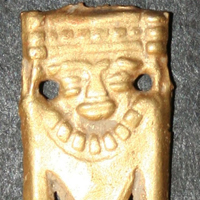
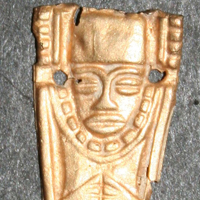

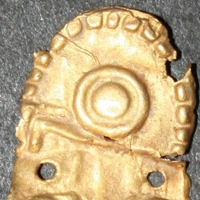
Colombia, South America
Tumbaga Objects, early 20th century
Gold/copper alloy, various sizes ranging from 1 inch to 4 inches in length
Gift of Lammot duPont
Tumbaga is the name given by Spanish Conquistadors for an alloy of gold and copper that was widely used by the pre-Columbian cultures of South and Central America. These are likely repoussé necklace parts, indicated by the perforations seen at the periphery of each. These are warrior-priest figures and a frog, a revered spirit-animal.
Gerd Dreher (Idar-Oberstein, Germany, 1939-2018?)
Chimpanzee
Agate, 1 3/4 x 2 x 1 3/4 inches
Master carver Gerd Dreher created this chimpanzee from one piece of agate, taking advantage of the color banding in the material. Unique in his approach, he compiled a massive library of animal images and videos in order to study the movement and musculature for each animal he planned to carve. Dreher was a fourth-generation carver from Idar-Oberstein, Germany, whose grandfather and great-grandfather carved for Fabergé. His one-piece carvings and his detailed style was his own and his son, Patrick, continues in this same style.
Unknown Etruscan Artist
Tuscany, Italy
Appliqué of a River God (Acheloos?), 480-470 BCE
Terracotta, 1 5/8 x 1 7/8 inches
Gift of Mr. & Mrs. Arnold Saltzman
This male head with bullhorns has traces of red and blue paint and white engobe (liquid clay slip) encrustation. The curved shape of the appliqué and the paint fragments suggest it may have been part of a vase. In Greek mythology, Achelous (Acheloos in Etruria) was the patron deity of the "silver-swirling" Achelous River, which is the largest river in Greece. Achelous is thus the chief of all river deities. This appliqué is consistent with other river god images found in the region.
Unknown Japanese Carver
Netsuke, before 1960
Wood, paint, 1 7/8 x 1 5/8 inches
Gift of Mrs. Arthur Brin
Invented in 17th century Japan, netsuke, like this one, were attached to the obi (sash) of the kimono. Boxes such as inro hung from these carved wood or ivory toggles. An example of an inro is on view nearby. These boxes stored coins, medicine, cosmetics, or other necessities.
Quartz (amethyst)
Irai, Rio Grande do Sul, Brazil
4 x 7 1/2 x 2 inches
Estate of Frederick A. Keidel
This double “flower” of amethyst is from the only locality known for this formation. The flower is formed by hundreds of individual crystals radiating from the center.
Unknown Gran Pajanal Maker
Peru
Bandolier, mid-20th century
Job’s tears seeds, black canna seeds, 55 inches circumference
Gift of Dr. & Mrs. Russell J. Seibert
The Gran Pajanal (Great Grassland or Great Savannah) is an isolated interfluvial plateau in the Amazon Basin of Peru, inhabited by the Asháninka or Ashéninka people, as well as immigrants from the Andes Mountains. This bandolier was worn as a decorative shoulder sash and is unusually ornate and intricate. Many others were simply formed of multiple strands of coiled vegetable fibers.
Unknown Vai Maker
Liberia, Africa
Beaded Apron, mid-20th century
Cotton, glass beads, 12 1/2 x 44 1/2 inches (including ties)
Gift of Mrs. Rose Joseph
This apron is worn by a woman when she is initiated into the Bundu or Sande society. Although the Sande society is usually associated with the Mende of Sierra Leone, practitioners are found among the Vai, who inhabit southeastern Sierra Leone. Sande emphasizes the political and social interests of women and its complementary society is that of the male dominated Poro. The Sande or Bundu society features a highly structured and stratified female leadership, highlighting the unusual social position of women in this region.
Unknown Asmat Maker
Sepik River, Papua, New Guinea
Amulet Necklace, 20th century
Wood, paint, cowrie shells, seeds, 19 inches long
Gift of Camille B. Schiffman
This necklace, probably a tourist piece, is composed of seeds and small shells and terminates in a carved mask pendant of a typical teardrop shape seen in many Papuan masks. Faces adorning the necklace are concentrically carved, inpainted, and stained to achieve an abstracted and enigmatic expression. The intricate beadwork of alternating seeds and shells is typical of Asmat handwork.
Unknown Asmat Maker
Middle Sepik River, New Guinea
Headband, early 20th century
Bark, shells, 26 1/8 x 3 3/8 inches
Gift of Camille B. Schiffman
The Sago palm found throughout New Guinea has many uses. Sago is primarily used in making flour from the starch in the pith in its stems. This staple is fundamental to the diet of many people in New Guinea. The palms also have fibrous sheaths at the base of the fronds, and this sheath or bark is pounded to make a kind of “bark” fabric. This headband is a prime example of this type of cloth, with the small shells chainstitched (an interlocking looped stitch resembling a chain) to the surface in the concentric rows often favored by Papuan men.
Unknown Maker
Egypto-Roman (Coptic)
Pipe or Dagger Handle (ca. 150 CE)
Bone, 7 3/4 inches long
Unknown Donor
In the Egypto-Roman or Coptic period, bone was used extensively for utensils such as spoons, or for decorative objects. Many such objects were found in the Fayum Oasis region west of Cairo. This object could have been a pipe, although it is more likely that it served as the handle for a hammered copper dagger blade, as the clenched fist could symbolize fighting or combat.
Spodumene (Kunzite)
Brazil
40 x 55 x 45 mm, 614 carats
Gift of William K. and William M. Ryan
Named after George F. Kunz, who sold many minerals to Irénée du Pont, who left them to the University of Delaware, this mixed pear-cut kunzite (purple-pink color variety of the mineral spodumene) is of excellent clarity and fine color. Kunz was an American mineralogist and was considered to be the first gemologist.
Unknown Artist
Possibly Italy
Repoussé Plate with Figures, 17th-19th century
Silver, 7 1/2 inches diameter
Gift of Mr. Alan Gerdau
This silver repoussé plate features figures cavorting around the outer ring. In the center medallion there appears to be a kneeling nude. The subject might be satyrs and nymphs dancing around Bacchus, or it might depict men on horseback battling around the figure of a bound woman. This may have been a medallion attached to a larger object or platter; it is unlikely that this is a stand-alone object, as its thinness makes it very vulnerable, as evidenced by small tears around the edges.
Unknown Campa/Asháninka Maker
Peru
8-strand beaded necklace, mid-20th century
Black seeds, 32 inches long
Gift of Dr. & Mrs. Russell J. Seibert
When this object was donated to the collection, it came with the name “Campa,” an alternate and pejorative name for the Asháninka that is nonetheless still in use. The Campa/Asháninka speak a language belonging to the Arawak family. Most also speak Spanish and Quechua. This necklace is a typical example of everyday adornment; its seeds are similar to those of the canna plant.
Beryl (heliodor)
Volodarsk-Volynskii, Zhitomir Oblast, Ukraine, Russia
1 1/4 x 7 x 1 1/4 inches
Heliodor is the yellow color variety of the mineral beryl. The deposit that produced this heliodor was originally mined in the Soviet era for industrial-grade quartz. The quartz miners sometimes found beautiful gem-grade heliodor crystals and, not aware of their value, took them home to be used as decorations. In the 1980s, underground chambers about fifty feet tall were found, full of crystals. Beryl crystals generally have hexagonal outlines and smooth surfaces, but fluids in the mine, frequently acidic, etched the surface patterns seen on this crystal.
Beryl (heliodor)
25 x 37 x 14.8 mm, 87.03 carats
Gift of John M. Levinson
Topaz
Xanda Mine, Virgem de Lapa, Minas Gerais, Brazil
6 3/4 x 5 1/2 x 3 inches
Estate of Mrs. David Craven
The Xanda Mine and the three other deposits in the area were discovered from 1939-1945. The miners followed the veins of beryl, tunneling underground and blasting with dynamite in the hard rock. The Xanda mine was a maze of tunnels, forcing miners to follow their instinct on where the gem pockets were thought to be located. This topaz is unusual for its large size, natural blue color, and intact crystal form. Much of the topaz used in jewelry today is not naturally blue but is irradiated to produce the color.
Topaz (Imperial)
Ouro Preto, Brazil
11.1 x 19 x 12.1 mm, 22.25 carats
This step-cut imperial topaz (yellow) is the same mineral as the blue topaz shown with it. The yellow variety is much rarer than the blue variety.
Emil Becker (Idar-Oberstein, Germany, dates unknown)
Snail
Agate, 2 x 3 1/2 x 1 1/2 inch
The snail is carved from two pieces of agate with a translucent cream-white agate for the body and a banded orange-brown agate for the univalve shell.
Unknown Maker
Japan
Lacquerware Box with Wood Bell Netsuke, 20th century
Red lacquer, abalone nacre inlay, wood, pink coral ojime (bead), 3 1/8 x 1 1/2 inches
Gift of William M. Donaldson
Lacquerware objects such as boxes, vases, and pieces of furniture are made by applying layer upon layer of treated lacquer sap to a base of wood. Once applied by brush or immersion, the sap, which is thinned with tung oil and colored with minerals such as cinnabar, is allowed to dry in the dark until hard. After this, another layer of sap is applied, followed by another and then another. This exacting process is usually repeated scores of times. This box, worn suspended from the netsuke attached to the obi (sash), has a rich orange color and is inlaid with abalone nacre (mother of pearl). The netsuke takes the shape of a wooden bell, or, as it is sometimes called, a temple block. It is a musical instrument that when struck with a mallet makes a hollow clopping sound.
Unknown Carver of Kangxi Emperor, late Qing Dynasty
China
Seated Monkey Amulet, 1722 or later
Red Jade, 1 1/4 x 1 inches
Gift of Dr. & Mrs. Willi Riese
This amulet, like other animals represented in jade, has various meanings in China. The monkey, prized for its cunning and cleverness, is an example of how animals exemplify spirituality in nature.
Unknown Mossi/Mosi Carver
Burkina Faso, Africa
Bird Hat Mask [Wannoraogo], early to mid-20th century
Wood, polychrome, 7 3/4 x 5 x 15 7/8 inches
Gift of William C. Lickle
This mask represents one of the three major styles found among the Mossi, who live in the Ougadougou state in southwest Mossi territory. Like most masks of this type, the features are stylized, yet retain the recognizable identity of an animal, in this case, a rooster.
Unknown Artist
Possibly Egypt
Bronze Triangle, possibly 380-363 BCE
Bronze, 3 x 3 1/2 inches
Unknown donor
Much conjecture surrounds the authenticity of this piece as an ancient Egyptian artifact. Some of the crude hieroglyphs in the inscription may indicate forgery, or they could have been added later. Other legible hieroglyphs might be ancient, lending credence to the possibility that the object is authentic. An approximate translation of the left cartouche reveals the name of King Nekhtanebo I, founder of the Thirtieth Dynasty (380-363 BCE). This object’s size and weight indicate it was not for personal adornment, but might have been hung from a tree or the neck of a bull, for example.
Unknown Artist
Huancayo, Andes Miotiso Region, Peru
Pair of Gauntlets, mid-20th century
Cotton, 11 x 6 inches
Gift of Dr. & Mrs. Russell J. Seibert
Huancayo’s embroidery art dates from the Spanish colonization of 1534, and was used to adorn the dresses of the icons and statues of the Catholic Church. Prior to embroidering, drawings of flowers, doves, butterflies, or hummingbirds are prepared on paper, and are then transferred by hand or machine stitching using threads of deeply saturated color and high contrast. Blankets, gala dresses, skirts, pants, vests, cuffs, and other garments, such as these gauntlets, are covered in these designs. These gauntlets also feature a figure waving the Peruvian flag at the cuff. The gauntlets slide over the forearm and terminate just above the elbow. Normally a gathered shorter-sleeved blouse and skirt, both draped with an embroidered manta, completes the ensemble, topped with a colorful hat.

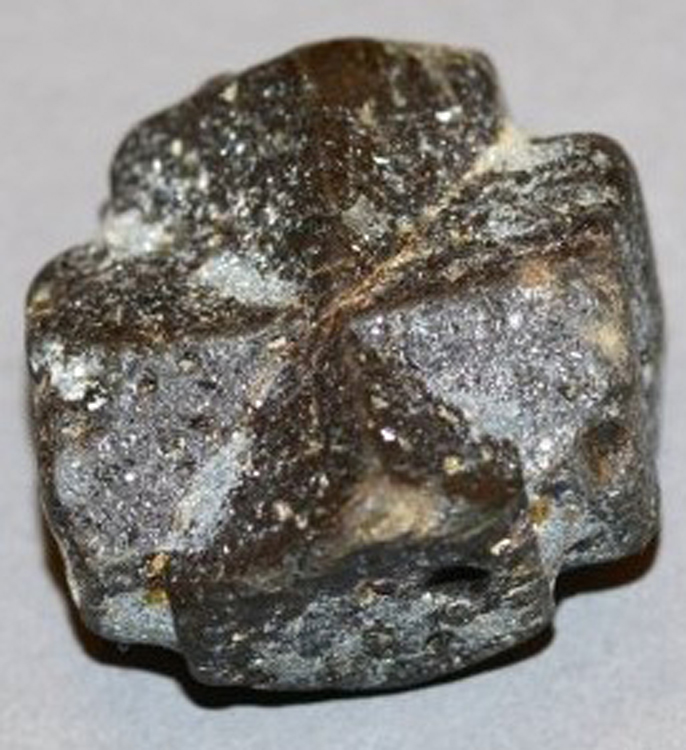
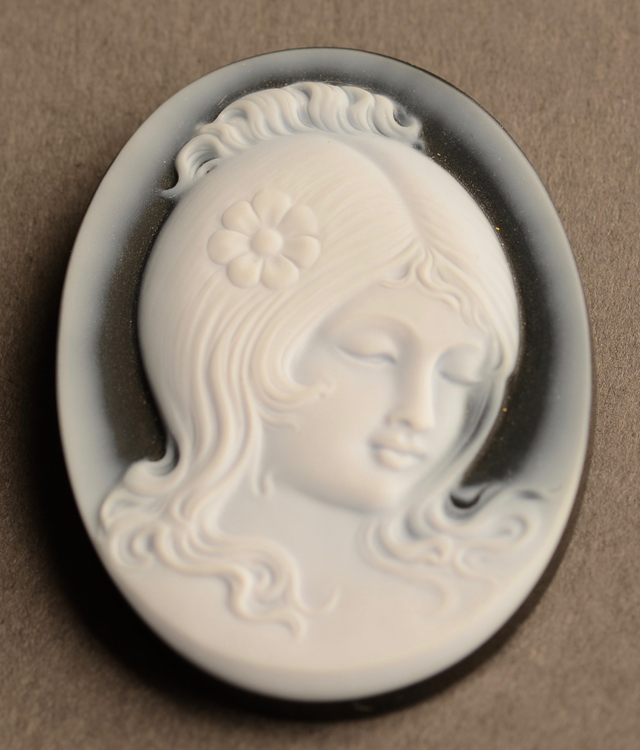


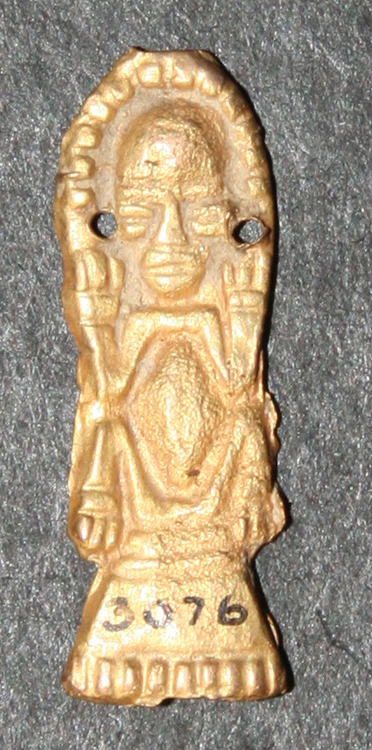









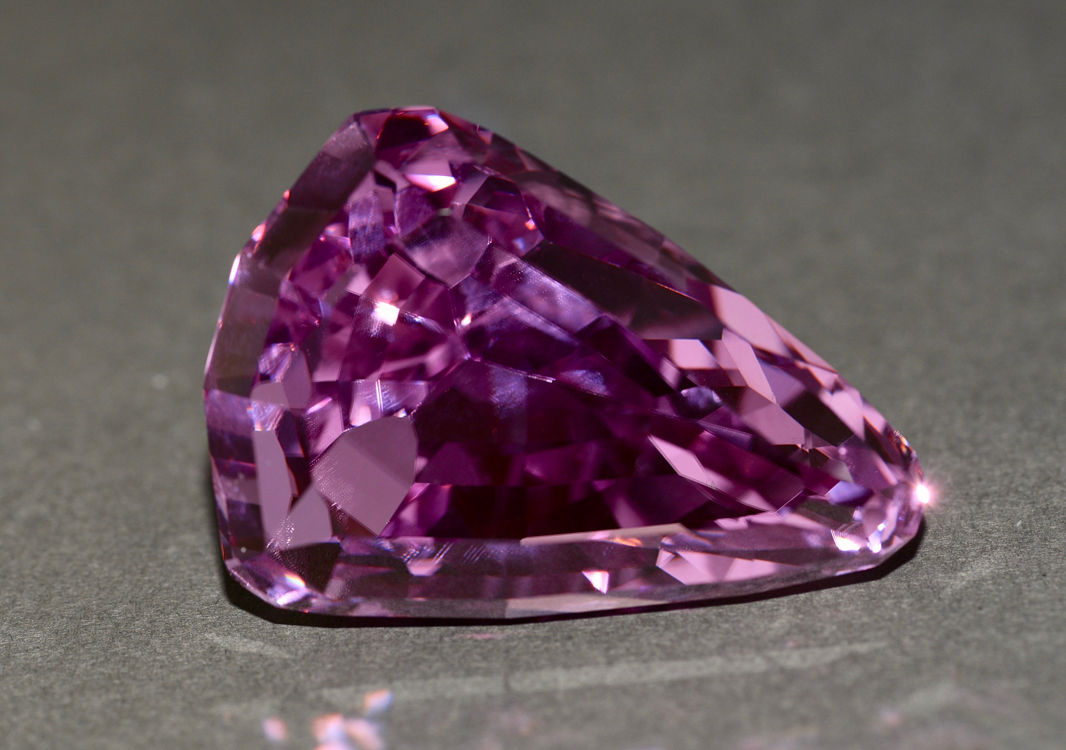

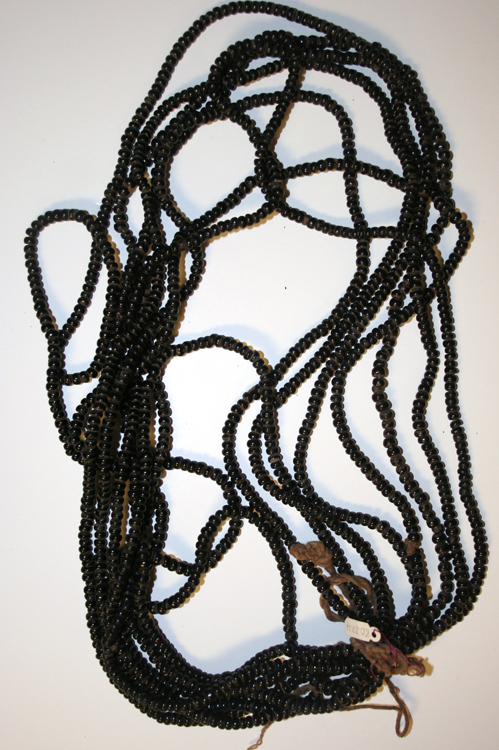
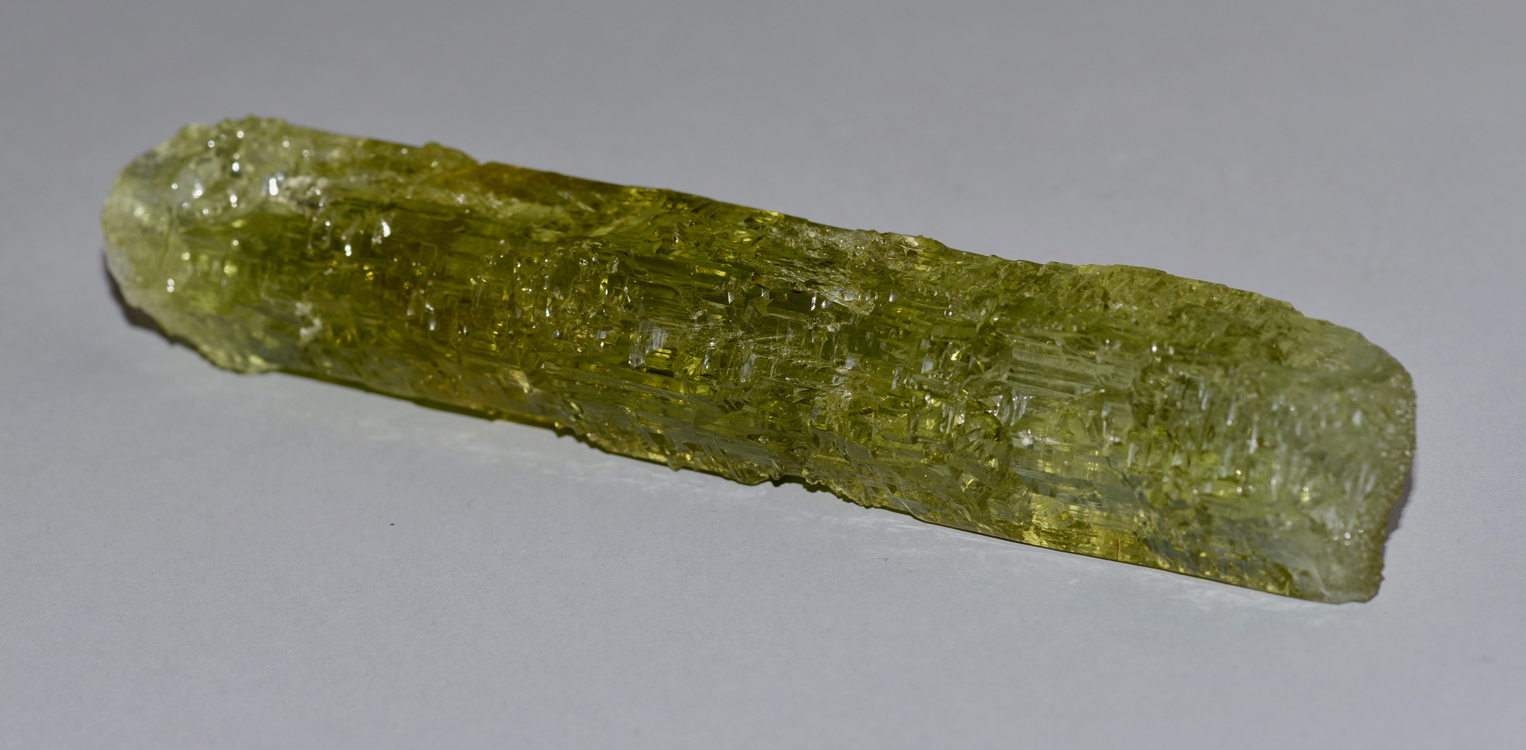
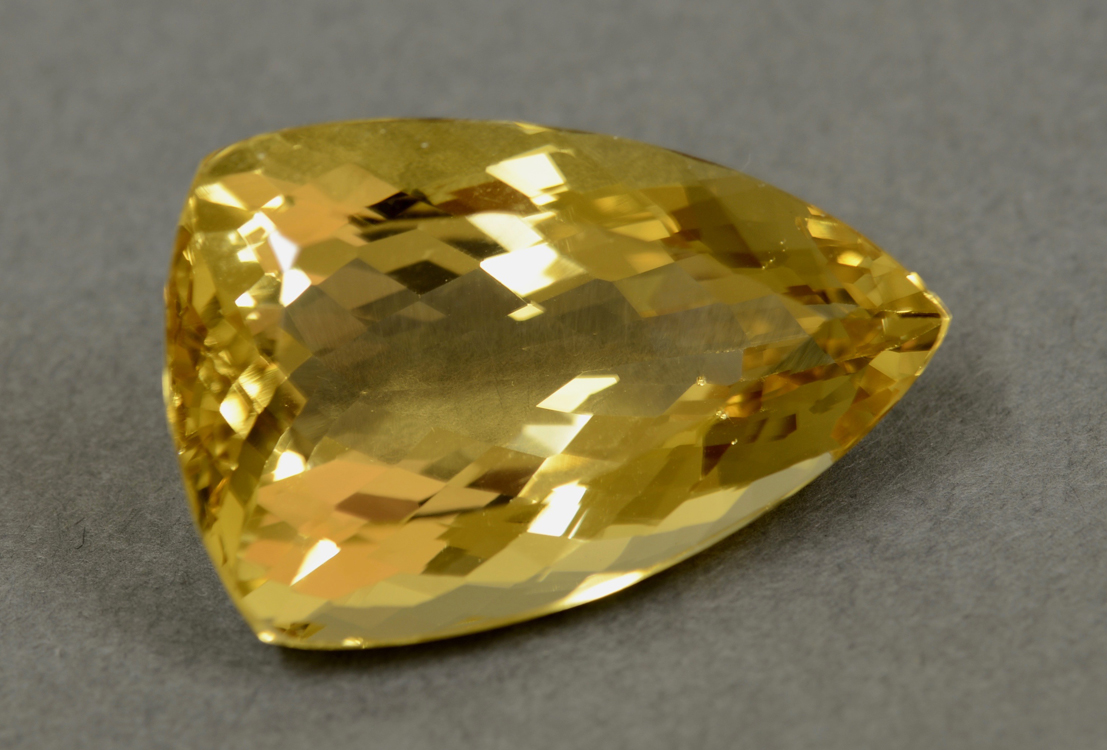

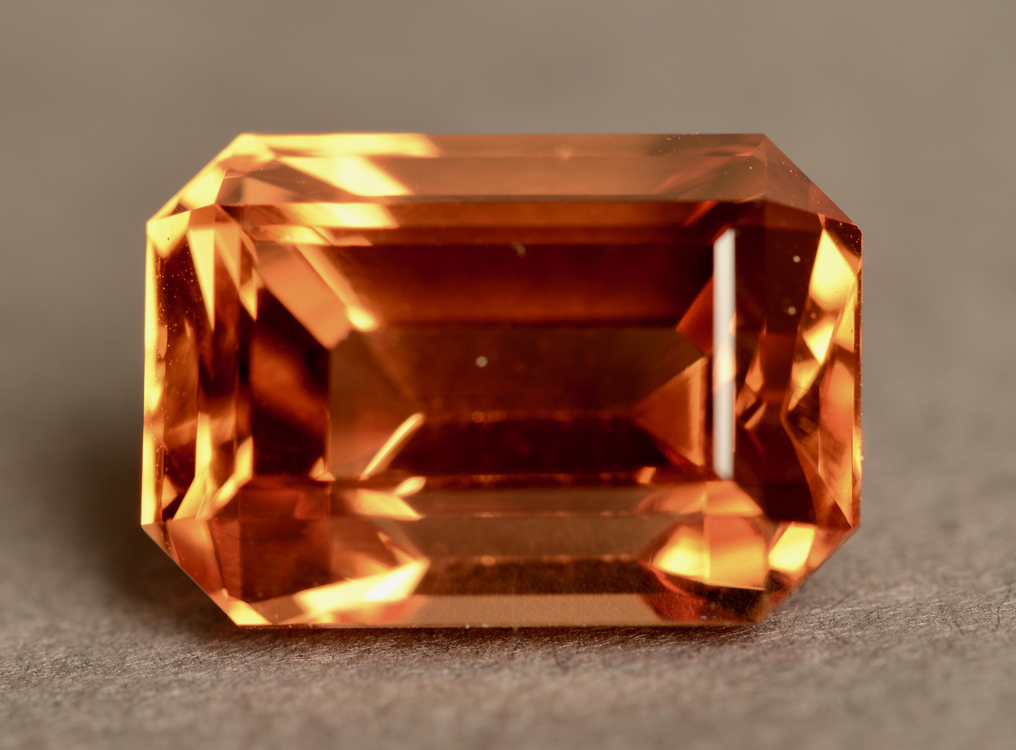



![124 Bird Hat Mask [Wannoraogo] 124 Bird Hat Mask [Wannoraogo]](https://exhibitions.lib.udel.edu/collectors-cabinet/wp-content/uploads/sites/234/2021/02/124-.jpg)


